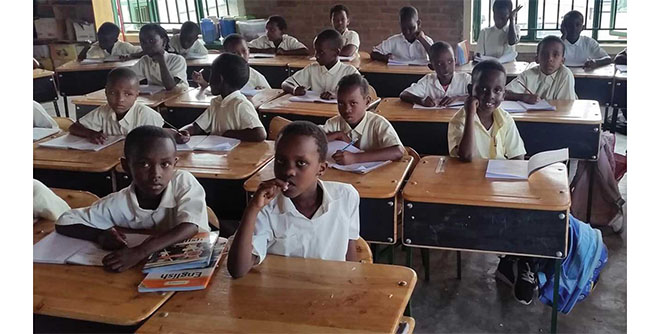
Sierra Leone President Maada Bio has made education the cornerstone of his human capital development agenda. Led by Minister David Sengeh, the country’s Ministry of Education is at the forefront of implementing major reforms, including a policy of radical inclusion in schools.
The premise is simple: Every child, regardless of gender, pregnancy status, disability, or otherwise, must have guaranteed access to mainstream quality education. But to achieve real radical inclusion and close learning gaps in Sierra Leone, we should consider a bold but impactful reform that would ensure children are taught in their mother language for the first three to five years of schooling.
A recent early grade reading and math assessment (EGRA-EGMA), conducted by the Ministry of Education and various credible partners, produced some eye-popping findings: 97 per cent of students in second grade cannot read and up to 60 per cent of students in fourth grade still score zero on the study’s comprehension test. Outcomes were just as bad in math, with 90 per cent of class 2 students and 70 per cent of fourth-grade students incapable of doing basic subtraction. These are clearly alarming numbers that require a holistic set of solutions, some of which are currently being crafted or implemented by the government.
The report makes another important observation: Even though English is the sole official language of instruction, only 1 per cent of learners speak it in the home; 75 per cent speak their local language, and up to 50 per cent speak Krio. Moreover, despite the official policy, up to 30 per cent of learners reported using local languages in school as part of class instruction.
English has been glamorized as the sole medium of instruction for years, with many believing that speaking local languages undermines the learning process. In fact, at many elite schools, there is a punishment for “speaking Patwa.”
There is, however, quite overwhelming evidence that the policy of prioritizing English proficiency undermines learning and has negative effects on learners, parents, and the education system in general. For this reason, many countries—including Haiti, Kenya, and the Gambia—have switched to using the pupils’ primary language as the language of instruction in grades one through five, as recommended by UNESCO as far back as 1953. UNESCO’s advice, which was grounded in solid research back then, has been confirmed by subsequent studies on the subject.
A study conducted in Kenya in 2005, for example, found that children are more likely to enrol and stay in school when taught in their primary language. For countries that have tried this on a small scale, this has consistently held true, with very positive results. Are we doing a disservice to the 99 per cent of learners in Sierra Leone for whom English is not a first or primary language by teaching them in English?
Speaking a second language in early grade classrooms can actually decrease access, equity, and inclusion, according to the World Bank and UNESCO. Learning is difficult when children walk into a classroom for the first time and hear a language they have probably never encountered, do not speak at home, and have almost no opportunity to practice outside of that context. In many instances, English is a language in which the teacher herself is not very conversant; this is the reality for many teachers in rural and peri-urban areas, making it difficult for them to explain the most rudimentary concepts to a child.
So, not only do pupils struggle to understand this new language thrust upon them, but also the teacher and pupils face barriers to establishing a meaningful learning process. The victims in this are the learners who, as the EGRA results show, are seriously lagging behind.
Brookings

Leave a Reply